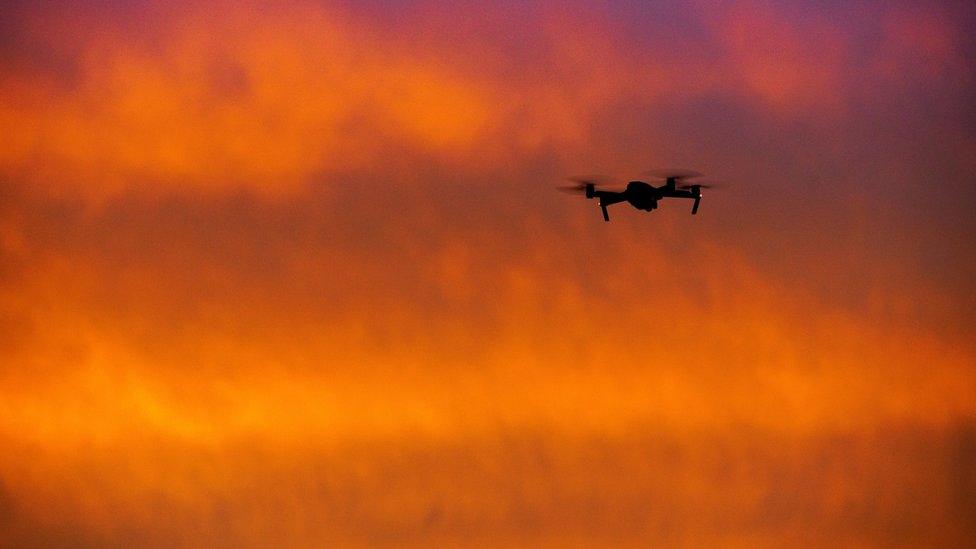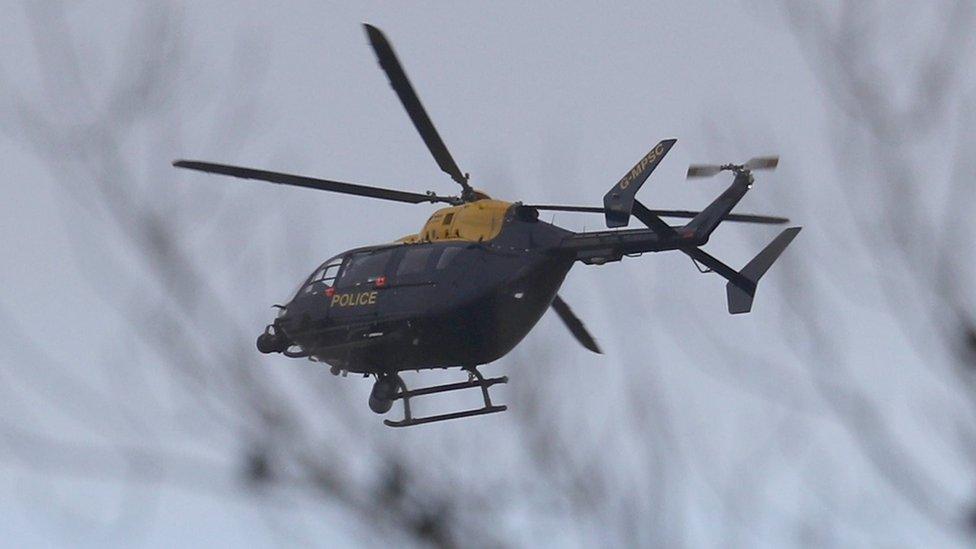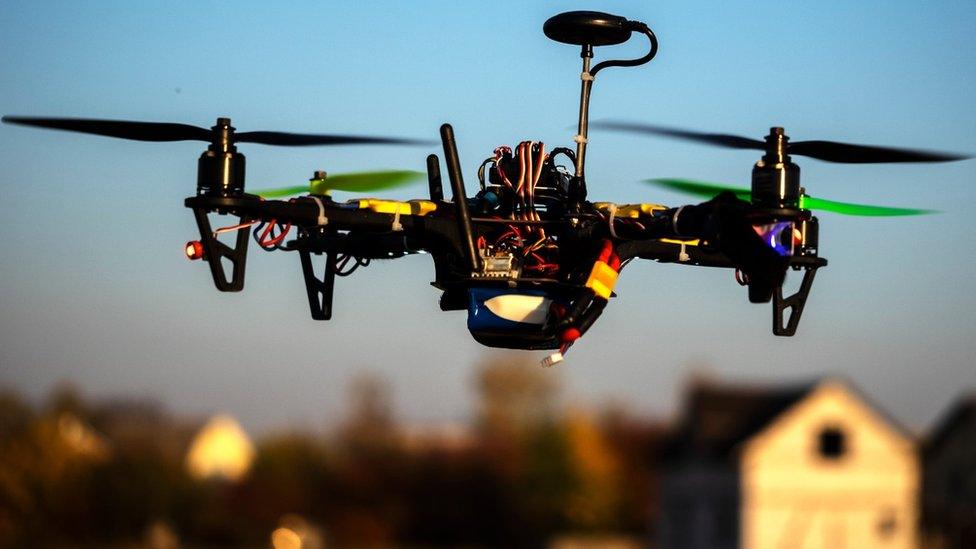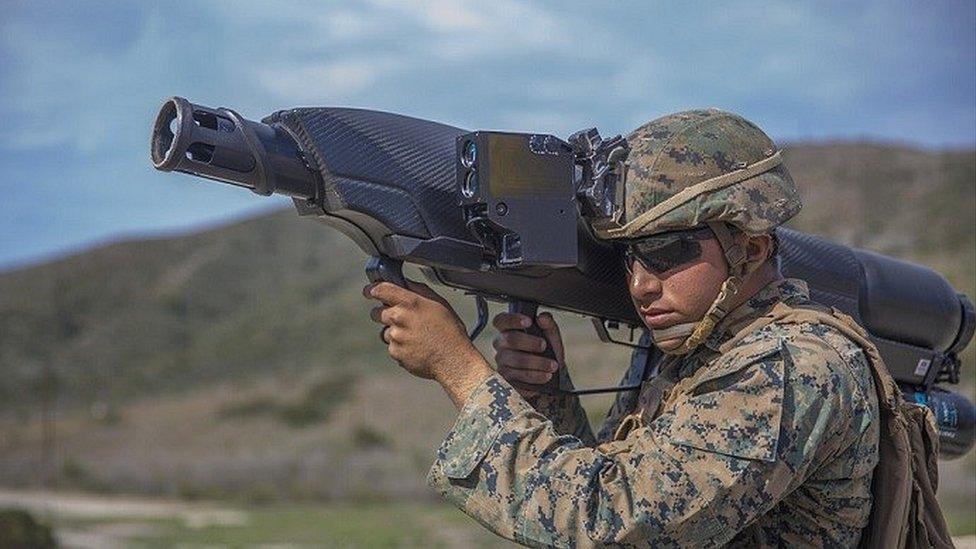Gatwick disruption: How will police catch the drone menace?
- Published

Police say they are still searching for those responsible for the unprecedented disruption at Gatwick Airport.
But the drones that were flown over the airfield have not been captured and have not been seen since Thursday night.
Endangering the safety of an aircraft is a criminal offence that can carry a prison sentence.
So how will police find those responsible?
Tracking the controller
If the drones were being operated by a typical remote control unit, it would be possible to establish the controller's position.
Police could pick up the controller's radio signal and "drive around and look where the signals are coming from", said cyber-security expert Prof Alan Woodward from the University of Surrey.
That would only be possible if the drones were being controlled by somebody in the area, which Prof Woodward thinks is a likely scenario.
Police have suggested that the operator moved when officers got close, which points to "someone in a van".

Police helicopters have been searching for the drone operator
A drone was seen so regularly that somebody must have been changing its batteries. Unless, of course, there was more than one drone.
However, there have been no sightings since Thursday night. If the operator has fled, there will be no signals to track.
Clues in the metadata?
Drones and their controllers emit radio signals, which the police can capture and analyse.
While Prof Woodward says there is "not much forensic information in the signals", there are "some identifiers" in them. This lets two drones work next to each other without signal interference - and could let police identify the drone or controller used, if they managed to record them.
It is also possible the drone operator was not at the airport and was controlling the devices over the internet.


If a drone was receiving its instructions using a mobile data connection, the network operators may be able to provide useful information.
If they were able to locate a device switching between mobile masts as it flew over the airfield, they may be able to identify the account holder.
But Prof Woodward says this would require a lot of technical knowledge, and thinks it is less likely that the drone was remotely controlled this way.
Missing evidence
The police have not managed to capture a drone. Now the operator has gone, the "evidence has gone with them", says Prof Woodward.
If one reappears, they could "follow it with another drone", although there have already been helicopters flying around the airfield looking for people.
The police have also appealed for any photos or videos the public have managed to capture of the drones. They could reveal whether the device is off-the-shelf or custom-made.
Beyond that, police will be searching Gatwick CCTV - both in the airport and the surrounding area.
"Gatwick Airport has a lot of CCTV inside the perimeter and on the edge looking outwards. But outside the airport it's quite a rural area, so I doubt there will be that much CCTV around," said Prof Woodward.
It could be like looking for a "needle in a haystack", he warns.
- Published21 December 2018

- Published21 December 2018

- Published21 December 2018
